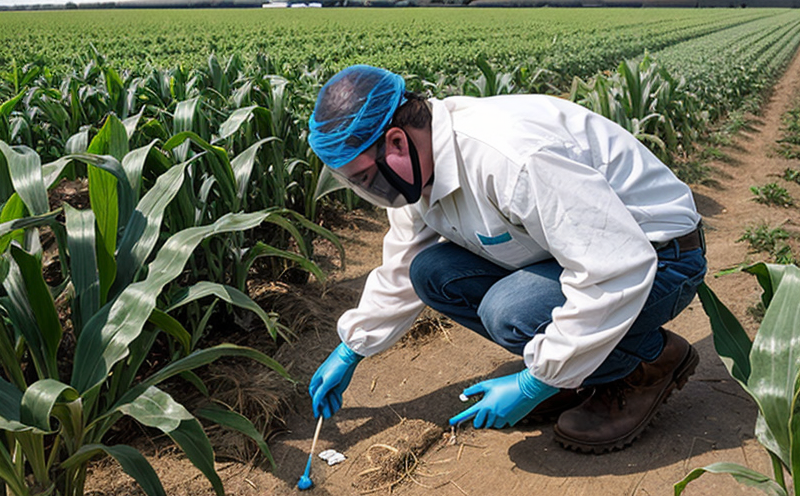Parathion Residue Testing in Crops
Parathion, a potent organophosphate pesticide, has been widely used for pest control. However, its residues persist in crops and pose significant health risks to humans, animals, and the environment if not managed properly. Ensuring that parathion residue levels are within safe limits is critical for agricultural compliance with international standards such as ISO 3651-4:2018 and EU Directive 91/414/EEC.
Our laboratory offers comprehensive testing services to detect, quantify, and report on parathion residues in crops. We utilize advanced analytical techniques including gas chromatography-mass spectrometry (GC-MS) and liquid chromatography-tandem mass spectrometry (LC-MS/MS), which are capable of providing high sensitivity and specificity for accurate residue detection.
Preparation of the specimen involves thorough sampling, extraction using solvent methods like QuEChERS (Quick, Easy, Cheap, Effective, Rugged, Safe) to ensure minimal interference from other compounds. The extracted samples undergo rigorous purification steps before being analyzed by our state-of-the-art instrumentation.
The results are reported according to internationally recognized standards such as ISO 3651-4:2018 and EU Directive 91/414/EEC, providing clear guidelines for acceptable limits of pesticide residues. Compliance with these regulations ensures that agricultural products meet safety and quality requirements.
| Residue Type | Acceptable Limit (ppm) |
|---|---|
| Parathion | <0.02 ppm |
Why It Matters
The presence of parathion residues in crops can lead to severe health implications, including acute poisoning and chronic toxicity effects. These risks underscore the importance of accurate residue testing. By adhering to stringent laboratory protocols and standards, we contribute to public safety and environmental protection.
Our services are crucial for several stakeholders within the agricultural sector:
- Agricultural producers who need to ensure their products meet regulatory requirements
- R&D engineers who require precise data for product development
- Quality managers responsible for maintaining high standards of food safety and quality
- Compliance officers tasked with ensuring adherence to international regulations
Competitive Advantage and Market Impact
Our parathion residue testing service offers a competitive edge by providing reliable, accurate, and timely results. This is particularly important in today’s market where consumer demand for safe food products continues to grow.
- We employ leading-edge technology that ensures precise detection of even trace amounts of residues
- Our experienced team guarantees adherence to strict quality control measures, enhancing the credibility of our reports
- Timely delivery of results supports efficient decision-making processes for our clients
Use Cases and Application Examples
The application of parathion residue testing is broad, encompassing various scenarios:
- Bulk crop inspections to verify compliance with international regulations
- Routine checks on processed agricultural products before market release
- Forensic analysis in cases where suspected contamination has occurred
| Scenario | Description |
|---|---|
| Bulk Crop Inspections | Comprehensive testing of large quantities of harvested crops to ensure compliance with international standards. |
| Routine Checks on Processed Products | Verification of processed agricultural products before market release to ensure safety and quality. |
| Forensic Analysis | Detection and quantification of parathion residues in suspected contaminated samples for legal purposes. |





